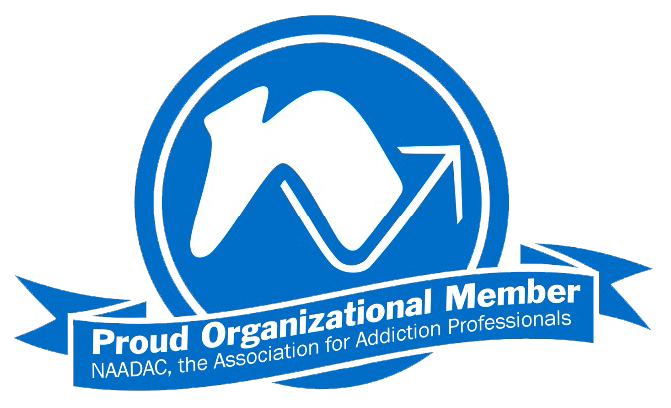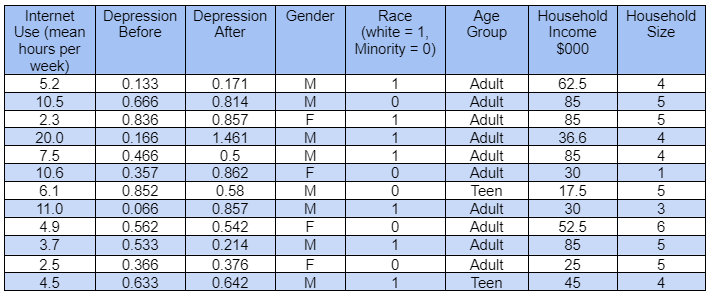-
GeneralGeneral
-
Introduction to Mental Health Homepage

Welcome to the Introduction to Mental Health Professions course. This course, designed for undergraduate students, provides an understanding of the fundamental principles of psychology in the Mental Health Professions. It focuses on the key themes and concepts of psychology as well as their application to psychological research and the ethical and social responsibility considerations that may arise.
The Introduction to Mental Health Professions course, like all NextGenU.org courses, is competency-based, using competencies from the American Psychological Association. It uses learning resources from accredited, world-class organizations such as the British Columbia Campus Open Education, Rice University, American Psychological Association, University of Southern California Libraries, University of Central Florida, and University of Minnesota.
The Introduction to Mental Health Professions course was developed by: Gabriel Young, Ph.D., LMFT; William Livingston; Prof. Nahid Fattahi, M.A.; Prof. Jay Scolio, PhD; Prof. Andrew Kami; Ruby Escatel, MFTT, M.A. Candidate; Jose Luis Gonzalez, M.A., AMFT; Aime Plantillas Veaz, MFTT, M.A. Candidate, from the Pacific Oaks College; and was designed by the NextGenU.org team: Alixandria Ali, BSc; Pablo Baldiviezo, MD, DiplEd; Genikka Camille Gabral, B.ED, MSc; Reisha Narine, MSc, BSc; Rhonda Prudent, BSc; Hugo Rojas, MD, MSc, DiplE.
For publications on NextGenU.org’s courses’ efficacy, see NextGenU.org’s publication page. Subscribe to our newsletter to be notified of future updates, new courses, and to be part of our community.
There are 5 modules to complete, which provide an introduction to:
Module 1: Knowledge Base in Psychology
Module 2: Scientific Inquiry and Critical Thinking
Module 3: Ethical and Social Responsibility in a Diverse World
Module 4: Communication
Module 5: Professional DevelopmentThe completion time for this course is estimated at 109 hours, comprising 17 hours of learning resources, 33 hours of time to study and assimilate content, and 59 hours of participating in learning activities and quizzes, to assist the learners in the synthesis of learning materials. This course is equivalent to 2 credit hours.
The Introduction to Mental Health Professions course requires the completion of discussion forums, peer activities, and quizzes to receive a course certificate. At the end of each module, there is a practice quiz of 10 multiple-choice questions. After you’ve completed each module, quiz, and learning activity, at the end of the course, you’ll have access to a final exam consisting of 50 multiple-choice questions and a chance to evaluate this course. Participants have up to three opportunities to take the final exam and achieve the required passing score of >=80%. Once you’ve passed the final exam and completed the evaluations, you will be able to download a certificate of completion from NextGenU.org and our course’s co-sponsoring organizations.
We keep all of your personal information confidential, never sell any of your information, and only use anonymized data for research purposes. Also, we are happy to report your testing information and share your work with anyone (your school, employer, etc.) at your request.
Engaging with this Course:
You may browse this course for free to learn for your personal enrichment; there are no requirements.
To obtain a certificate, a learner must first register for the course and then successfully complete:
- Pre-test,
- All reading requirements,
- All quizzes and pass with a 80% with unlimited attempts,
- All case studies,
- All discussion forums,
- The final exam with a minimum of 80% and a maximum of 3 attempts, and
- The self and course evaluation forms.
To obtain credit:
- Complete all requirements listed above for the certificate, and
- Your learning institution or workplace should approve the partner-university-sponsored NextGenU.org course for educational credit, as they would for their learner taking a course anywhere.
NextGenU.org is happy to provide your institution with:
- A link to and description of the course training so they can see all its components, including the co-sponsoring institutions,
- Your work products (e.g., discussion forum responses) and any other required or optional shared materials that you produce and authorize to share with them,
- Your evaluations -- course, and self-assessments, and
- A copy of your certificate of completion, with the co-sponsoring universities and other organizations listed.
To obtain a degree, NextGenU.org co-sponsors degree programs with institutional partners. To obtain a full degree co-sponsored with NextGenU.org, registrants must be enrolled in a degree program as a student of a NextGenU.org institutional partner. If you think that your institution might be interested in offering a degree with NextGenU.org, contact us.
We hope that you will find this a rewarding learning experience, and we count on your assessment and feedback to help us improve this training for future students.
Here are the next steps to take the course and earn a certificate:
- Complete the registration form,
- Take the pre-test, and
- Begin the course with Module 1: Knowledge Base in Psychology. In each lesson, read the description, complete all required readings and any required activity, as well as take the corresponding quizzes.
This course meets nationally approved standards of education developed for the addiction/substance use disorders counseling profession. This course's participants are assured that the continuing education (CE) credits provided will be accepted toward national credentialing by the NAADAC Certification Commission for Addiction Professionals (NCC AP), as well as by many of the individual state licensing/certification bodies in the addiction and other helping professions.
-
Module 1: Knowledge Base in Psychology

Competencies covered in this module:
- Describe key concepts, principles, and overarching themes in psychology.
- Develop a working knowledge of psychology’s content domains.
- Describe applications of psychology.
-
Module 1: Lesson 1: Themes, Principles, and Concepts Within the Field of Psychology
Student Learning Outcomes:
Upon completion of this lesson, you will be able to:
- Define the term "psychology".
- Recognize why psychology is a science.
- Explain the evolution of psychology into a science.
- Describe major perspectives of psychology.
- Describe the major branches of psychology.
10 URLs, 1 Forum -
Module 1: Lesson 2: The Content Domains of Psychology
Student Learning Outcomes:
Upon completion of this lesson, you will be able to:
- Recognize that the five domains act as pillars of psychology.
- Explain the biological domain in psychology.
- Explain the cognitive domain in psychology.
- Explain the developmental domain in psychology.
- Explain the social and personality domain in psychology.
- Explain the mental and physical health domain in psychology.
- Define industrial-organizational psychology, sport and exercise psychology, and forensic psychology.
7 URLs, 1 Forum -
Module 1: Lesson 3: Applications of Psychology and Psychological Research
Student Learning Outcomes:
Upon completion of this lesson, you will be able to:
- Explain that psychology influences our social lives.
- Describe how psychology can help understand everyday behaviour.
- Discuss how psychological differences can determine beliefs and social interactions.
3 URLs, 1 Forum -
Module 2: Scientific Inquiry and Critical Thinking in Psychology

Competency covered in this module:
- Use scientific reasoning to interpret psychological phenomena.
- Demonstrate psychology information literacy.
- Engage in innovative and integrative thinking and problem-solving.
- Interpret, design, and conduct basic psychological research.
- Incorporate sociocultural factors in scientific inquiry.
- Use scientific reasoning to interpret psychological phenomena.
-
Module 2: Lesson 1: Interpreting Psychological Phenomena
Student Learning Outcomes:
Upon completion of this lesson, you will be able to:
- Identify the difference between phenomena and theories.
- Describe the three dimensions of psychological theories.
- Discuss how theories are tested and evaluated in psychology.
- Recognize how hypotheses are developed.
- Describe how a research study is designed.
- Discuss effective ways for data analysis.
- Describe the method of drawing conclusions and preparing reports.
- Identify and navigate psychology databases and other legitimate sources of psychology information.
- Describe what kinds of additional information beyond personal experience is acceptable in developing behavioral explanations.
- Interpret simple graphs and statistical findings.
17 URLs, 2 Forums -
Module 2: Lesson 2: Research Methods and Problem-Solving in Psychology
Student Learning Outcomes:
Upon completion of this lesson, you will be able to:
- Describe problem-solving strategies.
- Discuss issues that can prevent effective problem-solving.
- Explain key concepts that characterize psychological research.
- Explain research design in psychology.
- Describe research methods used by psychologists, including their respective advantages and disadvantages.
- Explain how researcher’s biases can influence the development of scientific inquiry on psychological research.
- Explain potential challenges related to sociocultural factors in a given research study.
- Discuss how socio-cultural differences can influence the applicability/generalizability of research findings.
10 URLs, 3 Forums -
Module 3: Ethical and Social Responsibility in a Diverse World
 Competencies covered in this module
Competencies covered in this module- Apply ethical standards to evaluate psychological science and practice.
- Build and enhance interpersonal relationships.
- Adopt values that build community at local, national, and global levels.
- Apply ethical standards to evaluate psychological science and practice.
-
Module 3: Lesson 1: Ethical Standards in Psychology
Student Learning Outcomes:
Upon completion of this lesson, you will be able to:
- Describe a foundational framework for ethical issues in psychological research.
- Summarize the American Psychological Association's Ethics Code.
- Define the role of the institutional review board.
- Discuss strategies for identifying and minimizing risks and deception in psychological research.
3 URLs, 1 Forum -
Module 3: Lesson 2: Interpersonal Relationship Skills in a Diverse World
Student Learning Outcomes:
Upon completion of this lesson, you will be able to:
- Recognize the need to treat others with civility.
- Describe the need for positive personal values (e.g., integrity, benevolence, honesty, respect for human integrity, respect for human dignity) in building strong relationships with others.
- Identify aspects of individual and cultural diversity and the interpersonal challenges that often result from diversity and context.
- Recognize the potential for prejudice and discrimination in oneself and others.
- Describe psychology-related issues of global concern (e.g., poverty, health, migration, human rights, rights of children, international conflict, sustainability).
- Explain how psychology can promote civic, social, and global outcomes that benefit others.
9 URLs, 2 Forums -
Module 4: Communication
 Competencies covered in this module
Competencies covered in this module- Demonstrate effective writing for different purposes.
- Exhibit effective presentation skills for different purposes.
- Interact effectively with others.
-
Module 4: Lesson 1: Effective Writing and Reporting in Psychology
Student Learning Outcomes:
Upon completion of this lesson, you will be able to:
- Recognize the use of standard English, including generally accepted grammar.
- Recognize that writing content and format differ based on purpose (e.g., blogs, memos, journal articles) and audience.
- Discuss the overall organization (e.g., beginning, development, ending) that fits the purpose.
- Explain how to interpret quantitative data displayed in statistics, graphs, and tables, including statistical symbols in research reports.
- Explain how results can be analyzed.
- Describe how to use information from data to form conclusions.
6 URLs, 1 Forum -
Module 4: Lesson 2: Effective Communication
Student Learning Outcomes:
Upon completion of this lesson, you will be able to:
- Discuss that culture, values, and biases may produce misunderstandings in communication.
- Respond appropriately to electronic communications.
2 URLs, 2 Forums -
Module 5: Professional Development
 Competencies covered in this module
Competencies covered in this module- Refine project management skills.
- Enhance teamwork capacity.
- Apply psychological content and skills to career goals.
- Develop meaningful professional direction for life after graduation.
-
Module 5: Lesson 1: Psychology in the Workplace
Student Learning Outcomes:
Upon completion of this lesson, you will be able to:
- Recognize the link between efforts in self-management and achievement.
- Explain the role of psychology in managing employees.
- Explain the role of psychology in group performance.
- Describe the Psychology of making group decisions.
- Discuss using psychology to improve group performance.
5 URLs, 1 Forum -
Module 5: Lesson 2: Careers in Psychology
Student Learning Outcomes:
Upon completion of this lesson, you will be able to:
- Describe how psychology’s content applies to business, healthcare, educational, and other workplace settings.
- Recognize the different fields of psychology.
4 URLs, 1 Forum -
Course and Self Evaluation & Certificate
 In this section, you can provide feedback about this course to help us make NextGenU.org better. Once evaluations are completed, you will be able to download your certificate of completion.
In this section, you can provide feedback about this course to help us make NextGenU.org better. Once evaluations are completed, you will be able to download your certificate of completion.



